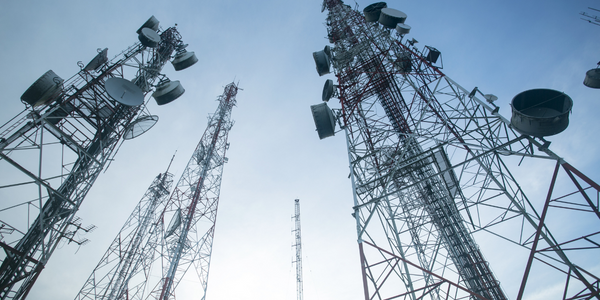
Technology Category
- Sensors - Optical Sensors
Applicable Industries
- Buildings
- Telecommunications
Applicable Functions
- Facility Management
Use Cases
- Smart Lighting
Services
- System Integration
The Customer
About The Customer
AT&T Inc. is an American multinational telecommunications corporation and is the largest provider of fixed telephone service in the United States. The company also provides mobile telephone services and broadband subscription television services. AT&T is committed to being socially responsible and has integrated this commitment into virtually everything they do. The company has an ambitious policy to reduce its carbon footprint by 20 percent by 2020 and is constantly looking for ways to optimize its energy performance across its sites.
The Challenge
AT&T, the largest provider of fixed telephone service in the United States, was committed to reducing its carbon footprint by 20 percent by 2020. In 2013, the company's energy team decided to optimize the energy performance across 1,000 of their largest energy-consuming sites and 500 of their retail sites. The challenge was to find an intelligent way to lower energy consumption using advanced technology. The company was looking for a solution that could be integrated into their existing infrastructure and could be expanded to other areas of facilities control, such as HVAC and building security in the future.
The Solution
Enlighted, a provider of advanced sensor systems, proposed an aggressive schedule of retrofitting a select set of AT&T properties. The plan was to replace all fluorescent light fixtures with new energy-saving LED lighting equipped with Enlighted’s advanced lighting control system. The retrofit initially focused on 240 properties or 20 million square feet of AT&T’s facilities. The overall goal was to retrofit all 120 million square feet of AT&T’s real estate. To help AT&T make the decision to move ahead with the project, Enlighted recommended its GEO service as a way to manage and maintain the system. The GEO program also allowed AT&T to recognize immediate energy savings from the project while paying for the installation through energy savings over time.
Operational Impact
Quantitative Benefit

Case Study missing?
Start adding your own!
Register with your work email and create a new case study profile for your business.
Related Case Studies.

Case Study
Energy Saving & Power Monitoring System
Recently a university in Taiwan was experiencing dramatic power usage increases due to its growing number of campus buildings and students. Aiming to analyze their power consumption and increase their power efficiency across 52 buildings, the university wanted to build a power management system utilizing web-based hardware and software. With these goals in mind, they contacted Advantech to help them develop their system and provide them with the means to save energy in the years to come.

Case Study
Intelligent Building Automation System and Energy Saving Solution
One of the most difficult problems facing the world is conserving energy in buildings. However, it is not easy to have a cost-effective solution to reduce energy usage in a building. One solution for saving energy is to implement an intelligent building automation system (BAS) which can be controlled according to its schedule. In Indonesia a large university with a five floor building and 22 classrooms wanted to save the amount of energy being used.

Case Study
Powering Smart Home Automation solutions with IoT for Energy conservation
Many industry leaders that offer Smart Energy Management products & solutions face challenges including:How to build a scalable platform that can automatically scale-up to on-board ‘n’ number of Smart home devicesData security, solution availability, and reliability are the other critical factors to deal withHow to create a robust common IoT platform that handles any kind of smart devicesHow to enable data management capabilities that would help in intelligent decision-making

Case Study
Protecting a Stadium from Hazardous Materials Using IoT2cell's Mobility Platform
There was a need for higher security at the AT&T Stadium during the NFL draft. There was a need to ensure that nuclear radiation material was not smuggled inside the stadium. Hazmat materials could often be missed in a standard checkpoint when gaining entry into a stadium.









